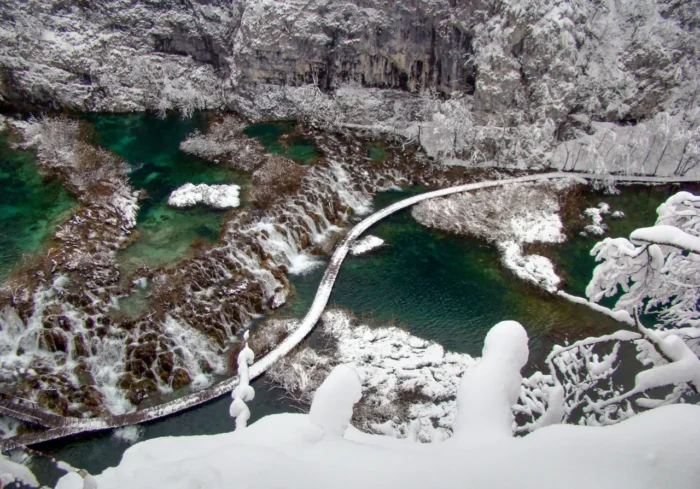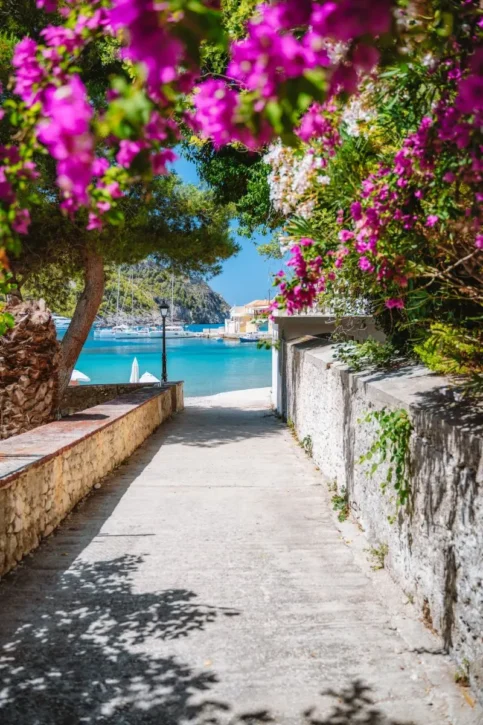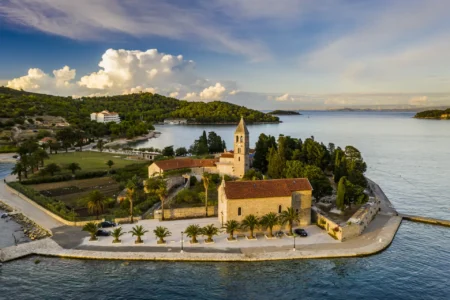What is the perfect time to visit Croatia? That question is a very hard one to answer if you ask me, because in my opinion, this is a country that has a lot to deliver in each season, unlike what most think (that it’s a summer destination only).
Do you dream of long beach days, hot weather, and lively nightlife? Or do you prefer warm days without the crowds? Maybe you’re more interested in hiking, festivals, or exploring historical towns at your own pace. The truth is, the best time depends on what you want from your trip.
Are you going solely for the sea and the beach, do you want the weather to be very hot or just warm or maybe you want to stay away from the crowds (or be part of them). We’ll cover all your options in today’s article!
My Top Pick: September in Croatia
If I really must pick, I choose September as the best month to visit Croatia. The weather is excellent – still warm but not as intense as July or August.
The sea stays perfect for swimming, but the crowds thin out as school resumes. Accommodation prices drop by 20–30%, which is also a bonus. Plus, it’s also the season of fresh figs and grapes – two fruits I absolutely love.
By the way, Split in September is amazing too!
However, you can visit anytime from April to September and have a great time as a tourist. Although you can’t yet enjoy swimming in April, you will certainly find warm and sunny weather, especially in Central and South Dalmatia. But you have a lot of summer/warm months to take advantage of!
Croatia’s Travel Seasons
When talking about the best time to visit, it helps to split the year into three travel seasons: low, high, and shoulder season. Each comes with its own pros and cons, and I will talk about each below.
Low Season (November – April)

This is when Croatia sees the fewest visitors. Temperatures drop, especially inland, and the Adriatic coast feels quiet. Many beaches and resorts are closed, and the country feels empty after the summer crowds.
But there are benefits if you decide to visit during this time of the year. Prices are at their lowest, making luxury stays more affordable. Highlights during this time include Christmas markets, New Year celebrations, and Carnivals. Prepare in advance by learning here how to say Merry Christmas in Croatian.
Fast forward to April – it brings pleasant weather and still lower accommodation costs, though many hotels and campsites remain closed until later in spring. During this time, though, beaches are generally off limits.
You can still walk on the empty beaches (which is an awesome experience), the air is fresh, but for the vast majority of the time you can’t sunbathe and the water is too cold even for dipping your toes into.
High Season (July – August)

This is peak travel season in Croatia. Days are consistently hot and sunny, and the Adriatic is perfect for swimming. The country’s most famous beaches – Hvar Island, Split, Korčula, Dubrovnik – are at their busiest, but so are even the less touristy ones.
High season also means festivals. Some of the biggest are:
- INmusic Festival (Zagreb)
- International Folklore Festival (Zagreb)
- ULTRA Europe (Split)
Cultural events and a buzzing nightlife add to the atmosphere, but on the downside, prices hit their peak, and crowds can be overwhelming. Still, for beach lovers and festival-goers, summer is worth it.
The trick to keep your budget low is to prepare in advance: book your stays early (as early as January-February) and you’re already saving. For that, check my article sharing the best All-Inclusive resorts in Croatia here, or search this website for your destination to find recommendations.
Shoulder Season (May – June, September – October)

For many – including myself, as I mentioned already – this is the ideal time to visit Croatia.
The weather is warm enough for swimming and sunbathing now and then (especially in September and maybe June), yet comfortable for outdoor activities. Tourist services are running, but crowds are thinner, and prices are more reasonable.
May and June are especially good for hiking, biking, kayaking, canoeing, sailing, and climbing. September and October offer the same benefits with slightly cooler evenings, but I prefer these because the weather is overall better.
If you enjoy active vacations and want balance between good weather and fair prices, shoulder season is perfect.
Weather in Croatia
Croatia’s climate changes depending on where you are, and there are basically two main regions:
- Coastal regions have a Mediterranean climate. Summers are hot and dry, averaging 28°C (82°F), while winters are mild, with lows around 4°C (39°F).
- Inland regions (check out the map of Croatia here) follow a continental climate. Summers are hot, but winters are cold and snowy.
Even along the Adriatic, conditions vary. Northern areas like Istria and Kvarner are cooler than Central and Southern Dalmatia.
In southern Dalmatia – around Dubrovnik, Korčula, and Mljet – you can sometimes swim until early November, as the sea cools more slowly.
Why Croatia is Worth Visiting in Any Season
I can guarantee one thing, though: no matter when you decide to visit Croatia, you will be satisfied!
The country combines mountain landscapes with a stunning Adriatic coastline. In recent years, infrastructure has improved: motorways are better, hotels have been renovated, and direct international flights are more frequent, making it easier for you to get there. Check my list of international airports in the country here.
Some of the highlights include:
- Dubrovnik and Split have UNESCO-listed historic centers. These cities actually offer the likes of Roman, Byzantine, Venetian, and Austro-Hungarian monuments.
- Poreč is home to the famous basilica.
- Trogir and Šibenik feature remarkable cathedrals.
Plus, you’re always close to rocky shores, small pebble coves shaded by pinewoods, and crystal-clear water. It’s a mix of raw nature and human history that makes Croatia unforgettable and so enjoyable. You just have to experience it once to know what I mean.
Croatia is beautiful in all seasons and you won’t be wrong, whenever you go.

Now back to you – what is your favorite time of the year to visit Croatia? Do you prefer the peak of the season or you prefer to avoid the crowds and visit in early spring or fall? Or maybe you prefer winter in Croatia? Let us know below!

